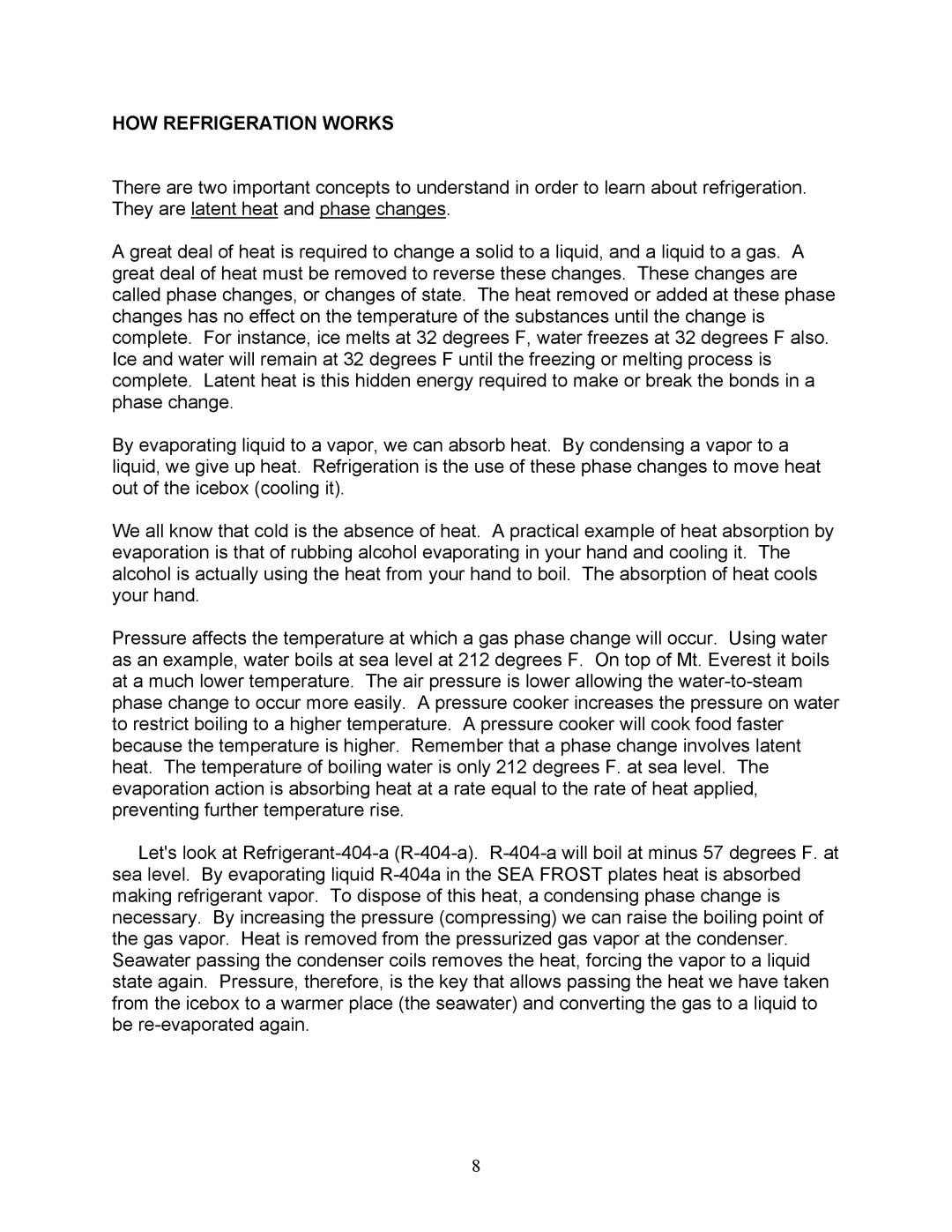BG 2000 specifications
The Sea Frost BG 2000 is a premier refrigeration unit designed to meet the demanding requirements of marine vessels. This advanced cooling system is engineered to provide reliable refrigeration performance even under the most challenging seawater conditions, making it a popular choice among boat owners and commercial fishermen.One of the main features of the Sea Frost BG 2000 is its innovative evaporator design. The unit employs a unique coil configuration that maximizes surface area for heat exchange, enhancing efficiency and cooling performance. This design ensures that your onboard refrigeration maintains optimal temperatures while consuming less power. This efficiency is crucial for extending the lifespan of gathered produce and maintaining the quality of stored goods.
The BG 2000 utilizes cutting-edge compressor technology, enabling it to deliver superior cooling capacity while minimizing noise and vibration. Its compressor is hermetically sealed, reducing the risk of leakage and ensuring a long operational lifespan. Additionally, the compressor’s variable speed operation allows for tailored cooling performance, adapting to the varying demands of the refrigeration system.
The Sea Frost BG 2000 is engineered for flexibility and ease of installation. Its compact design allows for simple integration into various types of vessels without significant modifications. Furthermore, the unit comes with a user-friendly control panel, giving users the ability to monitor temperatures and adjust settings effortlessly. This ensures that boat owners can maintain optimal refrigeration conditions without the hassle of complicated setups.
Another notable characteristic of the BG 2000 is its robust build. The unit is constructed with corrosion-resistant materials, ensuring durability in the harsh marine environment. This durability extends to its components, which are designed to withstand the rigors of saltwater exposure, ensuring a long service life under demanding conditions.
To further improve its functionality, the Sea Frost BG 2000 incorporates environmentally-friendly refrigerants that comply with modern regulations, promoting sustainability without compromising performance. With an emphasis on energy efficiency, this unit helps reduce fuel consumption, which is a critical consideration for marine operations seeking to lower operational costs.
In summary, the Sea Frost BG 2000 stands out in the marine refrigeration market, boasting advanced features, durable construction, and efficient operation. Its innovative design and technology make it an invaluable asset for any vessel looking to maintain high-quality refrigeration in an eco-friendly manner. Whether for commercial fishing or leisure cruising, the BG 2000 proves to be a reliable and efficient choice for marine refrigeration needs.
